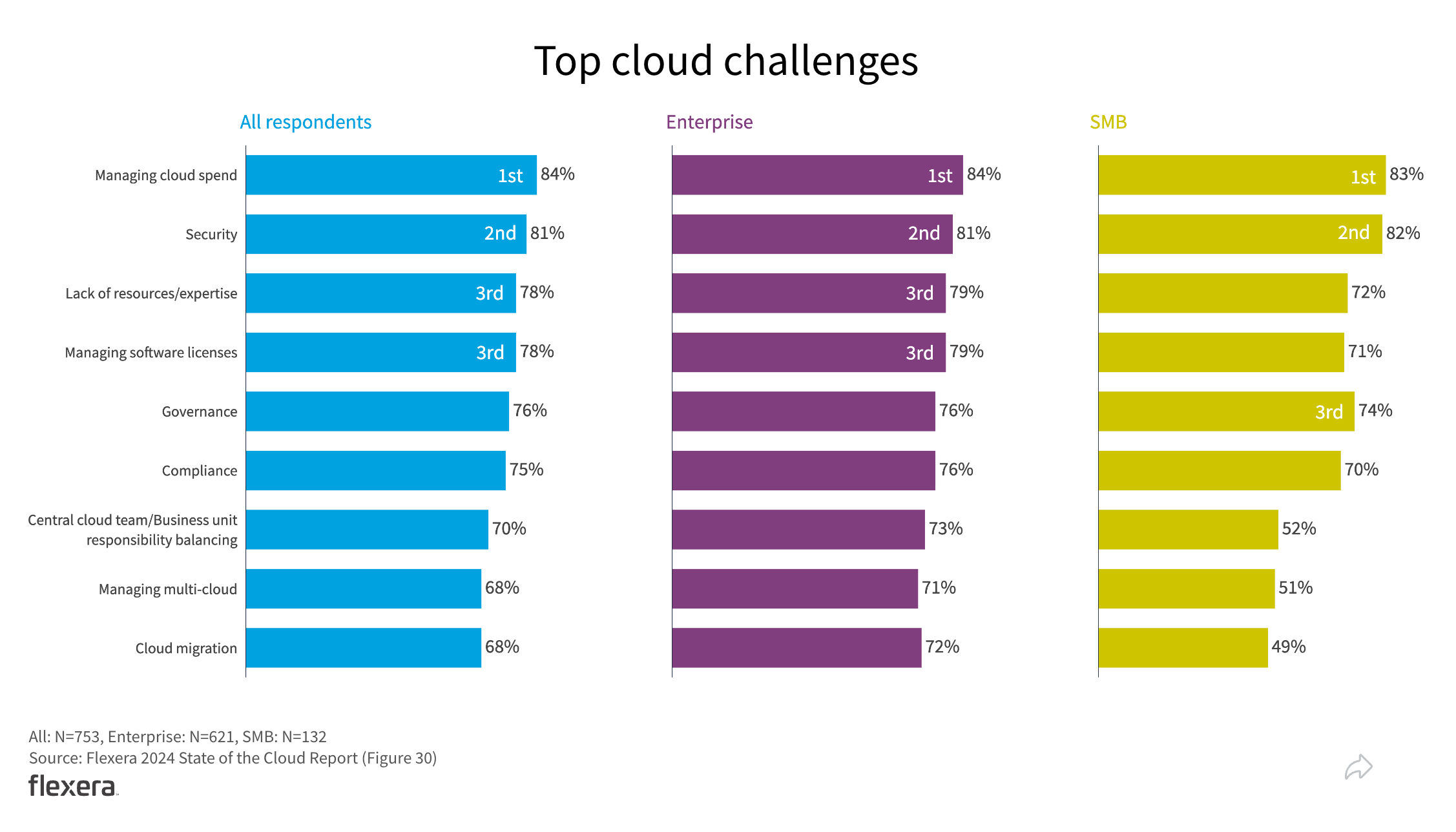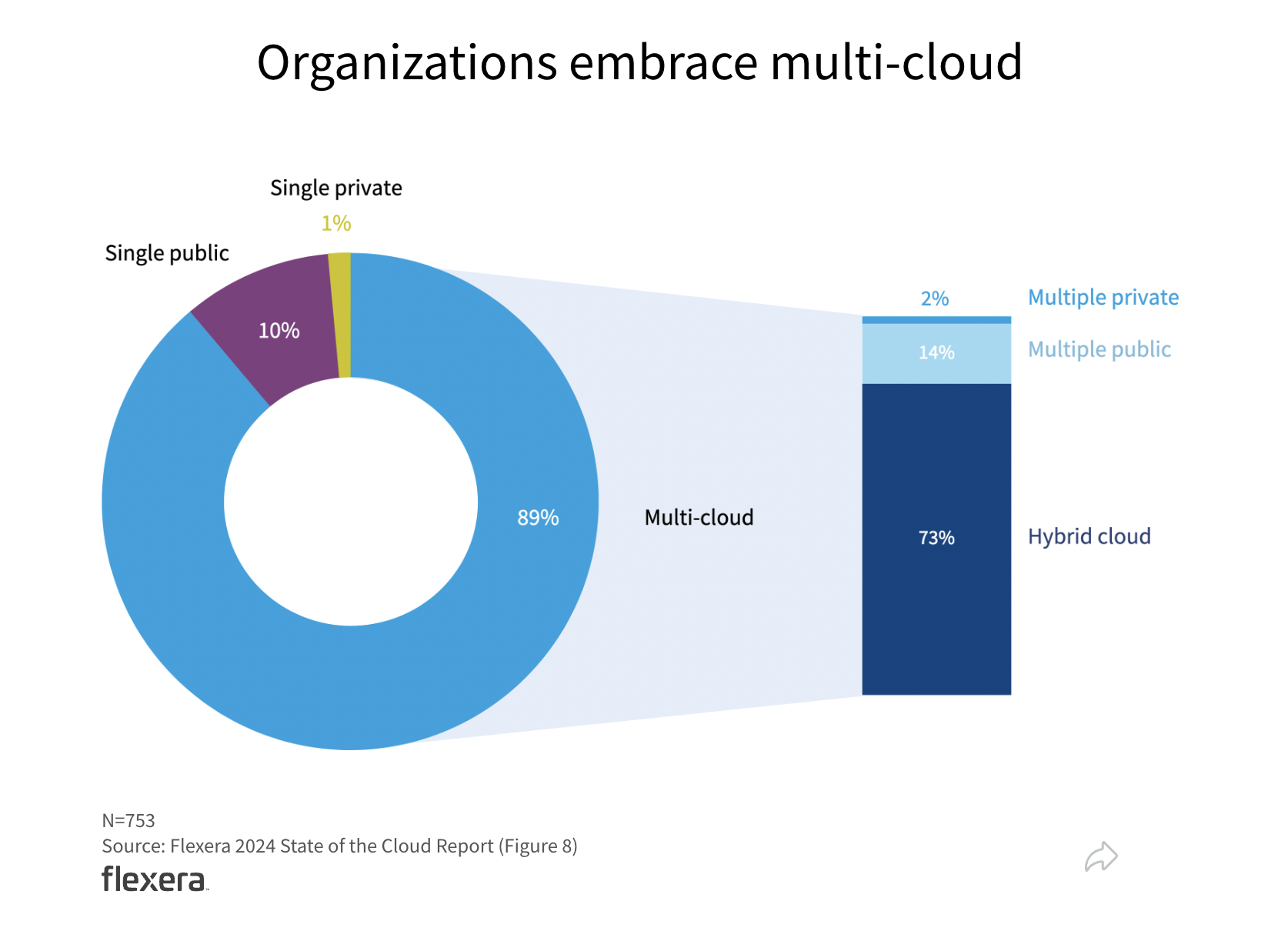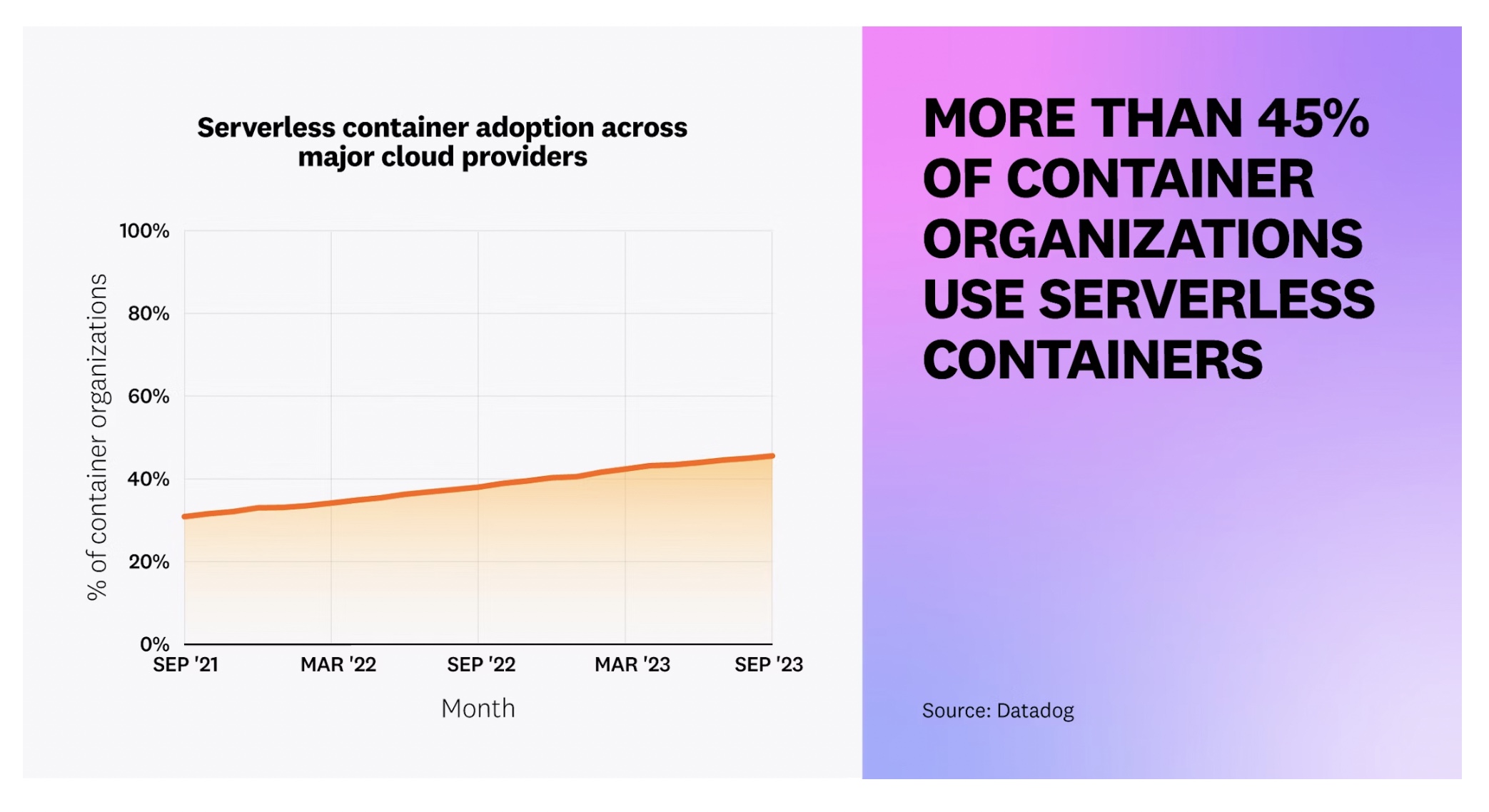State of the Cloud 2024 (From Flexera Report)
Dhaval Nagar / CEO
The Flexera 2024 State of the Cloud Report sheds light on cloud computing trends and the pressures facing IT professionals and the strategic initiatives they’re utilizing to remain competitive in today’s dynamic and evolving landscape.
It's an extensive report and I will highly recommend reading through it for deeper understanding.
https://info.flexera.com/CM-REPORT-State-of-the-Cloud
I will be focusing on just few of the aspects that are really important if you are working in the Cloud or providing Cloud related services like we do. Some of these points are already covered in earlier posts.
Cloud usage is on the rise
Cloud usage is unquestionably on the rise. Primarily because enterprises see the long-term value in cost-efficiency and business velocity - and to some degree due to the GenAI surge.
Migration for PaaS, IaaS, and SaaS has been most important in recent years. Companies are also embracing DevOps capabilities and automation; hence, they are increasingly seen as critical to realizing cloud adoption's technical and business benefits.
The Cloud Migration Market size is estimated at USD 232.51 billion in 2024, and is expected to reach USD 806.41 billion by 2029, growing at a CAGR of 28.24% during the forecast period (2024-2029).
https://www.mordorintelligence.com/industry-reports/cloud-migration-services-market

Azure has inched past AWS due their amazing collaboration with OpenAI and embedding GenAI capabilities to range of their services and SaaS applications. I am sure next year this graph will look more different and diverse.
Cost Optimization is a high priority
Once you are in the cloud, cost optimizations remains the high priority. Ensure that you're using the appropriate size for your cloud services. This means not over-provisioning resources and paying for more than you need, but also not under-provisioning and risking performance issues. Regularly review and adjust your resource allocations based on actual usage.
It’s also easy to notice why Cloud FinOps continues to evolve and grow as a cultural practice and financial management discipline.

Cloud provider pricing structures are complex and difficult to decipher, but provider discounts offer opportunities to reduce costs, specially to enterprises having higher spending.

GenAI will remain a dominant theme
Current economical uncertainties combined with surge of AI, many organizations are investing in transformative initiatives such as generative AI (GenAI) and sustainability, developing new capabilities and upskilling resources.
This technology is not just another incremental advancement; it's transformative, offering new avenues for innovation, cost reduction, and enhanced efficiency across a wide range of industries.

Cloud providers are indeed seizing the GenAI opportunity by offering infrastructure and platforms services that cater to the needs of this technology. These services are designed to be accessible and cost-effective, even for organizations with limited budgets and specialized skills.
To help businesses and developers get up to speed with AI and cloud technologies, cloud providers are also investing in extensive documentation, tutorials, and community forums. This educational support is crucial for democratizing access to AI technologies, making them more accessible to a broader audience.
Multi-cloud strategy will become normal
Most organizations have already employed multi-cloud or planning to. Organizations continue to factor in cost and performance prior to deploying applications in the cloud. Enterprises continue to find the best fit approach, often running applications in a single cloud, which simplifies configuration, maintenance and security.

A growing number of organizations find use cases for data analysis in clouds separate from the one an application is running in. Multi-cloud strategies reflects organizations' approach to utilize the unique strengths and offerings of different cloud providers to optimize cost, performance, security, and compliance.
While deploying applications in a single cloud environment can simplify configuration, maintenance, and security, it may not always offer the best fit for every application's needs. A multi-cloud strategy allows organizations to choose the best environment for each application based on specific requirements. However, this approach also introduces complexity in terms of management and integration.
Also, maintaining a consistent security posture and adhering to compliance requirements across multiple platforms can be challenging.
Containers and Serverless usage will grow
The significant uptick in the usage of Platform-as-a-Service (PaaS) offerings, Container-as-a-Service (CaaS), and Function-as-a-Service (FaaS) or serverless computing, highlights a growing trend in cloud computing towards more managed and abstracted services.
This shift is driven by the need for organizations to focus on innovation and application development without the overhead of managing infrastructure. Cloud services like AWS Lambda, Google Cloud Run and Amazon ECS (Elastic Container Services) offer higher abstraction and cost optimization compared to virtual machines and auto-scaling.
These services often come with pay-as-you-go pricing models, allowing users to pay only for the resources they consume. This model is inherently cost-aware, encouraging efficient resource use and enabling businesses to scale up or down based on demand, without incurring unnecessary costs.
From a frontend perspective, developers have always understood the power of the server for rendering better end-user experiences and SEO, but historically the barrier of entry to maintaining and provisioning a globally distributed edge network has been prohibitive for everyone but the largest companies. With innovations in the frontend cloud ecosystem—such as streamlined access to the serverless primitives and frontend frameworks that increasingly embrace a server-first model, like Next with React Server Components—we’re seeing the industry shift back to what made the web great to begin with: faster, more personalized, more first-party, and more private experiences.
Guillermo Rauch
CEO, Vercel
Summary
Amazon Web Services (AWS) and Microsoft Azure continue to be the most widely used cloud platforms. And the top three cloud providers—AWS, Azure and Google Cloud Platform—each gained adoption this year compared with last.
- Digital Transformation: Businesses are increasing their digital transformation efforts, utilizing cloud computing for its scalability, flexibility, and innovation potential.
- Generative AI Demand: The explosion in interest and investment in GenAI applications is a significant driver. These applications, ranging from content creation to complex data analysis, require robust computing resources and advanced AI tools that cloud providers are uniquely positioned to offer.
- Cost Efficiency: The cloud offers a cost-effective model for accessing advanced computing resources, with the ability to scale up or down based on demand. This is particularly appealing for GenAI projects, where computational needs can fluctuate significantly.
- Global Reach: Cloud platforms enable organizations to deploy applications and services globally, ensuring low latency and a better user experience for customers around the world.


